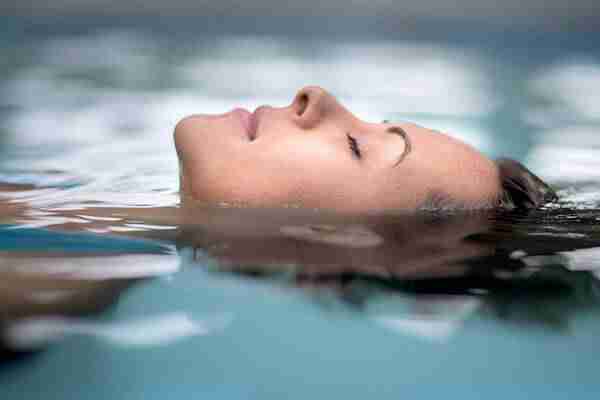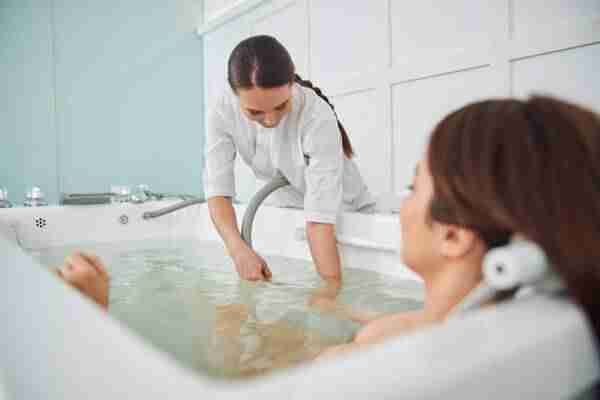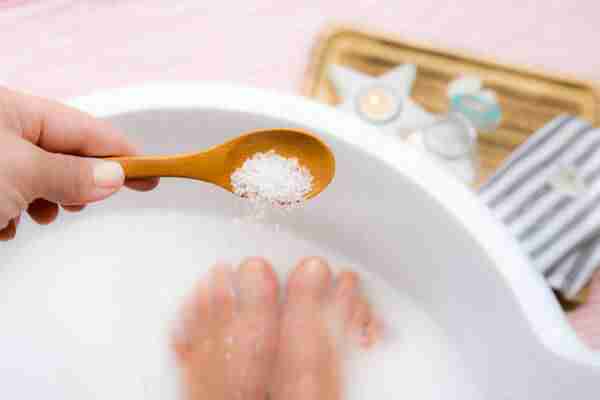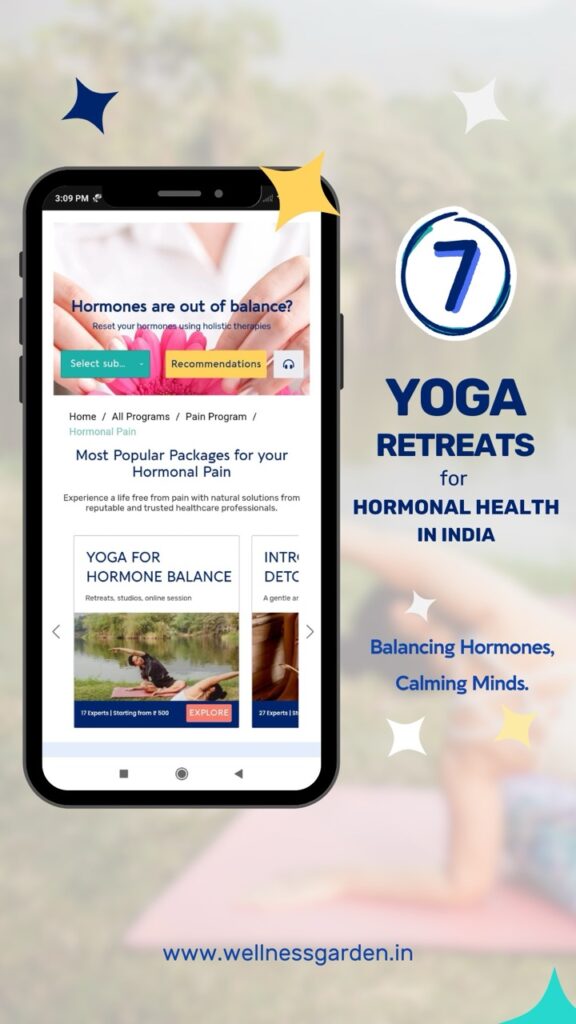The Power of Hydrotherapy For Pain Management
- Specialties & Therapies
- 3 mins
- March 19, 2024
- Dr. Paramjit Rana, Naturopath
- Good Health, Non-invasive Therapies
For centuries, water has soothing aches and pains. Today, science is unlocking the power of hydrotherapy as a valuable tool in managing pain.
In the pursuit of pain relief, many turn to conventional methods like medications or physical therapy. However, there’s a natural and often overlooked remedy that has been used for centuries: Hydrotherapy. Harnessing the power of water, hydrotherapy offers a myriad of benefits for pain management and overall well-being.

Introduction
Hydrotherapy, also known as water therapy, utilizes water at various temperatures and pressures to alleviate pain, promote healing, and enhance overall health. This ancient practice has been documented in cultures around the world, from the thermal baths of ancient Rome to traditional Japanese hot springs.
One of the key principles behind hydrotherapy is the modulation of blood flow and circulation. Alternating between hot and cold water can stimulate circulation, reduce inflammation, and promote the body’s natural healing processes.
Hydrotherapy treatment with temperature variations:
The cornerstone of hydrotherapy lies in the use of water at different temperatures to achieve desired therapeutic effects. Cold water constricts blood vessels, numbs nerve endings, and reduces inflammation, making it effective for acute injuries and swelling. On the other hand, hot water relaxes muscles, increases blood flow, and promotes relaxation, making it ideal for chronic pain and stiffness.
The following temperature chart is commonly used:
- Cold: 50 deg-64 deg F
- Neutral: 90 deg-98 deg F
- Hot: 102 deg-112 deg F
General precautions of hydrotherapy:
When it comes to hydrotherapy treatments, it’s crucial to take necessary precautions to ensure safety and maximize the therapeutic benefits. Here are some general precautions to consider:
- Consult a healthcare professional: Before undergoing any hydrotherapy treatment, it’s advisable to consult with a qualified healthcare professional, especially if you have any underlying medical conditions, such as cardiovascular diseases, diabetes, or respiratory problems. They can guide you on the suitability of the treatment and any specific precautions you should take.
- Monitor water temperature: Proper water temperature is essential for hydrotherapy treatments. Extreme temperatures, both hot and cold, can be harmful and potentially cause burns, hypothermia, or other adverse effects. Follow the recommended temperature ranges for each treatment and adjust the water temperature according to individual tolerance and comfort levels.
- Hydration: Hydrotherapy treatments can lead to dehydration, especially if they involve exposure to hot or warm water. It’s important to drink plenty of water before, during, and after the treatment to prevent dehydration and maintain proper hydration levels.
- Avoid prolonged exposure: Excessive exposure to hot or cold water can be detrimental to your health. Follow the recommended duration for each treatment and avoid staying in the water for extended periods, as this can lead to complications such as overheating, hypothermia, or skin irritation.
- Monitor for adverse reactions: Pay attention to any adverse reactions or discomfort during or after the treatment. If you experience dizziness, nausea, excessive sweating, or any other concerning symptoms, discontinue the treatment immediately and seek medical attention if necessary.
- Avoid hydrotherapy with open wounds: Individuals with open wounds, cuts, or skin infections should avoid hydrotherapy treatments, as water immersion can increase the risk of infection or further irritation.
- Pregnancy precautions: Pregnant women should exercise caution when considering hydrotherapy treatments. Some treatments, such as hot tubs or saunas, may be contraindicated during pregnancy due to the risk of overheating or potential adverse effects on the fetus. Consult with a healthcare professional for guidance on safe hydrotherapy options during pregnancy.
Various Hydrotherapy treatments
The cornerstone of hydrotherapy lies in the use of water at different temperatures to achieve desired therapeutic effects. Cold water, typically ranging from 50°F to 65°F (10°C to 18°C), constricts blood vessels, numbs nerve endings, and reduces inflammation, making it effective for acute injuries and swelling. On the other hand, hot water, ranging from 98°F to 104°F (37°C to 40°C), relaxes muscles, increases blood flow, and promotes relaxation, making it ideal for chronic pain and stiffness.
Finding the optimal temperature for hydrotherapy treatments depends on individual preferences and specific therapeutic goals. Let’s explore some of the common hydrotherapy treatments, their benefits, and relevant points:
Bath or Immersion Bath:

Involves immersion up to the neck in a tub of water.
a. Neutral Immersion Bath:
Temperature: (92-98°F or 33.3-36.7°C); Duration: 15 minutes-1 hour
Benefits:
Relieves muscle tension
Promotes relaxation
Improves circulation
b. Cold Immersion Bath:
Temperature: (60-70°F or 15.6-21.1°C); Duration: 6-10 seconds
Benefits:
Reduces inflammation
Alleviates pain
Improves metabolic rate
c. Hot Immersion Bath:
Temperature: (102-112°F); Duration: 2-15 minutes
Benefits:
Obesity, restores suppressed Menses and bronchitis and relieves pain caused by gallbladder and kidney stones.
d. Graduated Bath (gradual temperature increase from cool to warm/hot):
Temperature: The patient starts the bath at 88 degrees F and gradually lowers to 77 degrees F.
Benefits:
Stimulates circulation
Improves overall well-being
The Epsom Salt Bath:

Epsom salts (magnesium sulfate) are added to the bathwater, creating a therapeutic soak. The bath should not be taken more than twice a week.
Benefits:
Relieves muscle soreness
Reduces inflammation
Promotes relaxation
Replenishes magnesium levels (magnesium and sulfate ions absorbed through the skin)
Hip Bath
a. Cold Hip Bath:
Temperature: (60-70°F or 15.6-21.1°C); Duration: 6-10 seconds
Benefits:
Alleviates pelvic pain
Relieves menstrual cramps
Reduces inflammation
b. Hot Hip Bath:
Temperature: (100-110°F or 37.8-43.3°C); Duration:10-15 minutes
Benefits:
Relieves pelvic congestion
Alleviates menstrual cramps
Promotes relaxation
Foot Bath:

Temperature: (100-110°F or 37.8-43.3°C); Duration: 5-10 minutes
Benefits:
Improves circulation,
Promotes relaxation,
Adds essential oils or salts enhances therapeutic effects,
Beneficial for diabetes or circulatory problems in the lower extremities.
Spinal Bath:

Temperature: (100-110°F or 37.8-43.3°C); Duration: 3 minutes (Cold Spinal Bath)/ 20-30 minutes (Neutral Spinal Bath)
Benefits:
Relieves back pain
Improves circulation
Promotes relaxation
Helpful for spinal injuries or conditions
Sitz Bath:
Immerses pelvic region and buttocks
Temperature: (100-110°F or 37.8-43.3°C); Duration: 10-20 minutes
Benefits:
Alleviates pain in the perineal area
Promotes healing in the perineal area
Relieves hemorrhoids and pelvic discomforts
Recommended after childbirth or for gynecological conditions
It’s crucial to note that extreme temperatures, whether too hot or too cold, can be detrimental to health and should be avoided. Therefore, when undergoing hydrotherapy treatments, it’s essential to gradually adjust the water temperature to ensure comfort and safety. Consulting with a healthcare professional or certified Hydro-therapist can help determine the most suitable temperature range for individual needs and conditions.
1. Full Steam Bath:
Duration: 15-20 minutes.
A full steam bath involves immersing the entire body in a steam-filled enclosure, such as a steam room or steam cabinet. The high temperature and humidity provide several therapeutic benefits:
a. Vasodilation: The heat causes blood vessels to dilate, improving circulation and promoting the delivery of oxygen and nutrients to the body’s tissues.
b. Detoxification: Increased sweating aids in the elimination of waste products and toxins from the body through the skin.
c. Respiratory benefits: The moist heat can help loosen mucus and alleviate respiratory conditions like bronchitis or sinus congestion.
d. Relaxation: The warmth and humidity can induce a state of relaxation, reducing stress and muscle tension.
Typically, a full steam bath session lasts between 10 to 20 minutes, followed by a cool shower or plunge to avoid overheating. Proper hydration before and after the session is crucial.
2. Stimulation Packs:
Stimulation packs, also known as hot packs or fomentations, involve the application of moist heat to a specific area of the body. These packs are usually made by wrapping hot, moist towels or pads around the targeted region. The heat stimulates blood flow and provides relief for various conditions, such as:
a. Muscle pain and stiffness: The heat helps relax tense muscles and alleviate muscle spasms.
b. Menstrual cramps: The warmth can provide soothing relief for menstrual discomfort.
c. Respiratory issues: When applied to the chest or back, stimulation packs can help loosen mucus and ease respiratory congestion.
The duration and temperature of the packs may vary depending on the condition being treated and individual tolerance. Proper precautions should be taken to avoid burns or excessive heat exposure.
3. Full Sheet Wet Packs:
Full-sheet wet packs involve wrapping the entire body in cold, wet sheets or towels, followed by a layer of dry blankets or towels. This treatment aims to stimulate the body’s natural healing processes and can be beneficial for:
a. Fever reduction: The cold application can help lower body temperature and alleviate symptoms associated with fevers.
b. Pain relief: The combination of cold and pressure from the wraps can provide relief for various types of pain, such as headaches or muscle aches.
c. Detoxification: The cooling effect and mild compression are believed to promote the elimination of toxins and waste products from the body.
Full-sheet wet packs typically last for 30 minutes to an hour and may be repeated as needed. Proper monitoring of the patient’s temperature and hydration levels is essential during the treatment.
4. Compresses (Hot and Cold):
Compresses involve the localized application of hot or cold water to specific areas of the body. Hot compresses are used for their soothing and relaxing effects, while cold compresses are used for their analgesic and anti-inflammatory properties.
a. Hot Compresses:
Duration: 30 minutes
Hot compresses are beneficial for relieving muscle tension, improving circulation, and promoting relaxation. They can be used for conditions such as:
i. Muscle spasms and cramps
ii. Menstrual cramps
iii. Respiratory congestion (when applied to the chest or back)
b. Cold Compresses:
Cold compresses are often used to reduce inflammation, swelling, and pain. They can be applied to areas such as:
i. Sprains or bruises
ii. Headaches or migraines
iii. Insect bites or stings
iv. Fever (applied to the forehead or neck)
Both hot and cold compresses can be made using towels or cloths soaked in the appropriate temperature water and wrung out before application. The duration and frequency of application may vary based on the condition being treated and individual tolerance.
End Note:
It’s essential to consult with a qualified healthcare professional before undergoing any hydrotherapy treatment, especially for individuals with certain medical conditions or taking specific medications. Proper precautions should be taken to ensure safety and avoid potential risks or complications.
Hydrotherapy offers a natural and effective approach to pain management and overall well-being. By harnessing the healing power of water, individuals can find relief from aches, pains, and stress. However, it’s essential to approach hydrotherapy with caution and consult a healthcare professional, especially for those with underlying medical conditions. So, the next time you’re seeking relief from back pain or muscle stiffness, consider turning to hydrotherapy—the ancient remedy that’s as refreshing as it is rejuvenating.
Remember, water isn’t just for hydration—it’s your back pain’s secret weapon.
If you’re interested in practicing the aforementioned hydrotherapy under our guidance, feel free to get in touch with us for personalized hydrotherapy consultations and more.
A Word from WG
Wellness Garden is your committed partner in seeking comprehensive natural and holistic therapies to address all your pain and wellness requirements. Our approach encompasses the entirety of your body, mind, and environment, integrating body, mind, and nutrition therapy and various other techniques.
Whether you’re facing physical or mental health concerns, life hurdles, or simply aiming to enhance your overall well-being, we’re here to provide the support you need. Get in touch with us to explore the possibilities and embark on your journey towards holistic therapy and improved health.
- Table of Contents
- • Introduction
- • General Precautions
- • Types of Hydrotherapy
- • A Word from WG
Recent Posts
Join Our Newsletter
End note from WG Team
Dr. Paramjit Rana
Naturopath
Disclaimer: This information is provided for educational purposes and should not be construed as medical advice. Please consult with healthcare practitioners before undertaking any changes in wellness routines or adding new therapies.
Latest Blogs
Check out some of your blogs related to your interest.
- September 18, 2025
- Dr. Piyush Jain
- 2 Mins
- September 12, 2025
- Dr. A. Shaji Bharath
- 2 Mins
- September 10, 2025
- NIH
- 4 Mins
- August 16, 2025
- Dr. Shubhankari P. Rao
- 2 Mins





